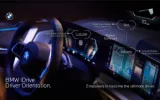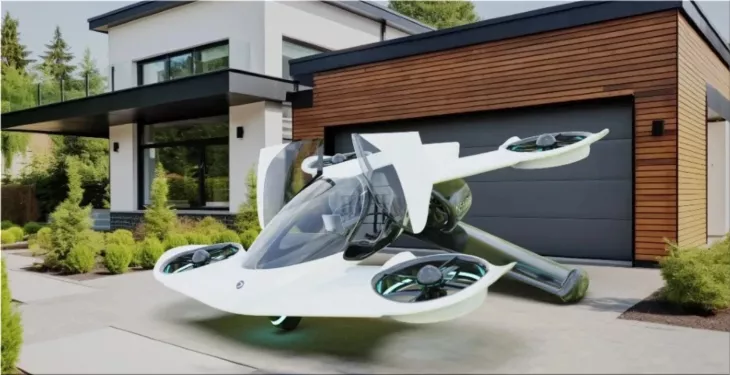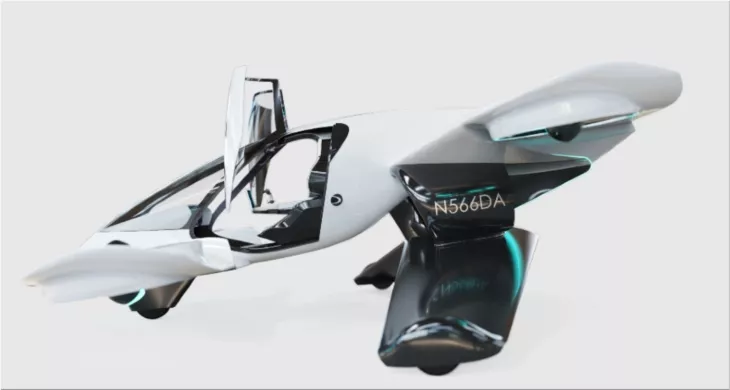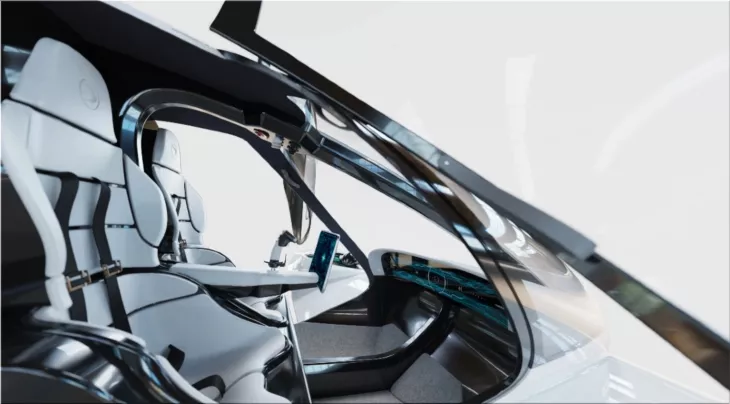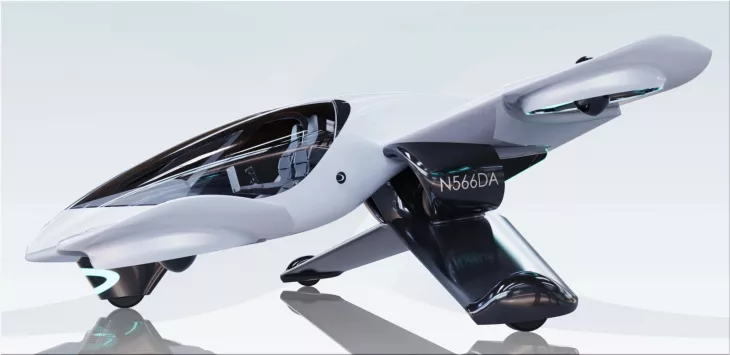Doroni is a startup that aims to revolutionize personal air travel with its H1-X eVTOL. The H1-X is an electric vertical take-off and landing (eVTOL) vehicle that can fly up to four passengers at speeds of up to 200 mph. The H1-X is designed to be safe, efficient, and easy to use, with features such as autonomous flight, obstacle avoidance, and emergency parachutes. Doroni claims that the H1-X will be the first eVTOL to achieve Type Certification from the Federal Aviation Administration (FAA) and the European Union Aviation Safety Agency (EASA), making it ready for commercial operations by 2026.
What is the H1-X eVTOL?
The Doroni H1-X is a sleek and futuristic-looking eVTOL that resembles a cross between a helicopter and a jet. The H1-X has a wingspan of 36 feet and a length of 28 feet, and weighs about 2,200 pounds. The H1-X is powered by eight electric motors that drive eight propellers, four on the wings and four on the tail. The propellers can tilt up to 90 degrees, allowing the H1-X to take off and land vertically, as well as transition to horizontal flight. The H1-X has a range of 150 miles and a cruising altitude of 3,000 feet and can carry a payload of 880 pounds.
The Doroni H1-X eVTOL is designed to be user-friendly and accessible, with a simple and intuitive interface that allows the passengers to select their destination and enjoy the ride. The H1-X can fly autonomously, using advanced sensors and artificial intelligence to navigate the airspace and avoid obstacles. The H1-X also has a manual mode, where the passengers can take control of the eVTOL using a joystick and a touchscreen. The H1-X has several safety features, such as redundant systems, airbags, and emergency parachutes, that can be deployed in case of a malfunction or a collision.
The H1-X is intended to be a personal air vehicle for various purposes, such as commuting, tourism, recreation, and emergency services. Doroni envisions that the H1-X will be part of a network of vertiports and heliports that will enable fast and convenient air travel within and between cities. Doroni also plans to offer a subscription service that will allow customers to access the H1-X on demand and a platform service that will allow third-party operators to use the H1-X for their own applications.
How is the H1-X different from other eVTOLs?
The H1-X is not the only eVTOL in development, as some several other companies and projects are working on similar vehicles, such as Joby Aviation, Lilium, Volocopter, and Ehang. However, Doroni claims that the H1-X has several advantages and innovations that make it stand out from the competition. Some of these are:
- Performance: The H1-X has a higher speed, range, and payload than most other eVTOLs, making it more suitable for longer and heavier trips. Thanks to its electric propulsion and aerodynamic design, the H1-X also has a lower noise level, making it more environmentally friendly and less disruptive to the surroundings.
- Certification: The H1-X is the first eVTOL to pursue Type Certification from the FAA and the EASA, which are the highest safety and quality standards for aviation. This means that the H1-X can operate in the same airspace as conventional aircraft and will be subject to the same regulations and inspections. This will also make the H1-X more attractive to customers and investors, as it will reduce the risks and uncertainties associated with a new technology.
- Flexibility: The H1-X is designed to be adaptable and versatile, with a modular and scalable architecture that can accommodate different configurations and use cases. The H1-X can be customized to fit different needs and preferences, such as seating arrangements, luggage space, and entertainment options. The H1-X can also be integrated with other systems and platforms, such as smart cities, autonomous vehicles, and blockchain networks, to create new possibilities and opportunities for personal air travel.
What are the challenges and opportunities for the H1-X?
The H1-X is an ambitious and innovative project that aims to disrupt the transportation industry and create a new paradigm for personal air travel. However, the H1-X also faces many challenges and uncertainties that could affect its success and viability. Some of these are:
- Regulation: The H1-X will have to comply with the complex and evolving rules and standards for aviation. It will also have to demonstrate its safety, reliability, and efficiency, as well as its compatibility and interoperability with current and future air traffic management systems. The H1-X will also have to deal with the legal and ethical issues arising from using autonomous and electric vehicles, such as liability, privacy, and security.
- Infrastructure: The H1-X will require a network of vertiports and heliports that can support its operations and maintenance and provide the necessary services and amenities for the passengers and operators. The H1-X will have to coordinate with the existing and potential stakeholders, such as governments, municipalities, airports, real estate developers, and utility providers, to establish and expand the infrastructure for personal air travel. The H1-X will also have to overcome the technical and logistical challenges of charging, storing, and servicing the eVTOLs and managing the demand and supply of the vehicles.
- Acceptance: The H1-X will have to convince and educate the public and the market about the benefits and advantages of personal air travel, as well as address the concerns and fears that may arise from introducing a new technology. The H1-X will have to create a positive and appealing image and brand for itself and foster a community and a culture around the eVTOLs. The H1-X will also have to engage and collaborate with the customers, users, regulators, and policymakers to create a feedback loop and a learning process that can improve and enhance the eVTOL experience.
The H1-X is a bold and visionary project that could change how we travel and live. The H1-X is not just a vehicle but a platform and a service that could enable new modes and models of mobility and connectivity. The H1-X is not just a product but a solution and a vision that could address some of the major problems and challenges of our time, such as congestion, pollution, and inequality. The H1-X is not just a dream, but a reality that could be closer than we think.



